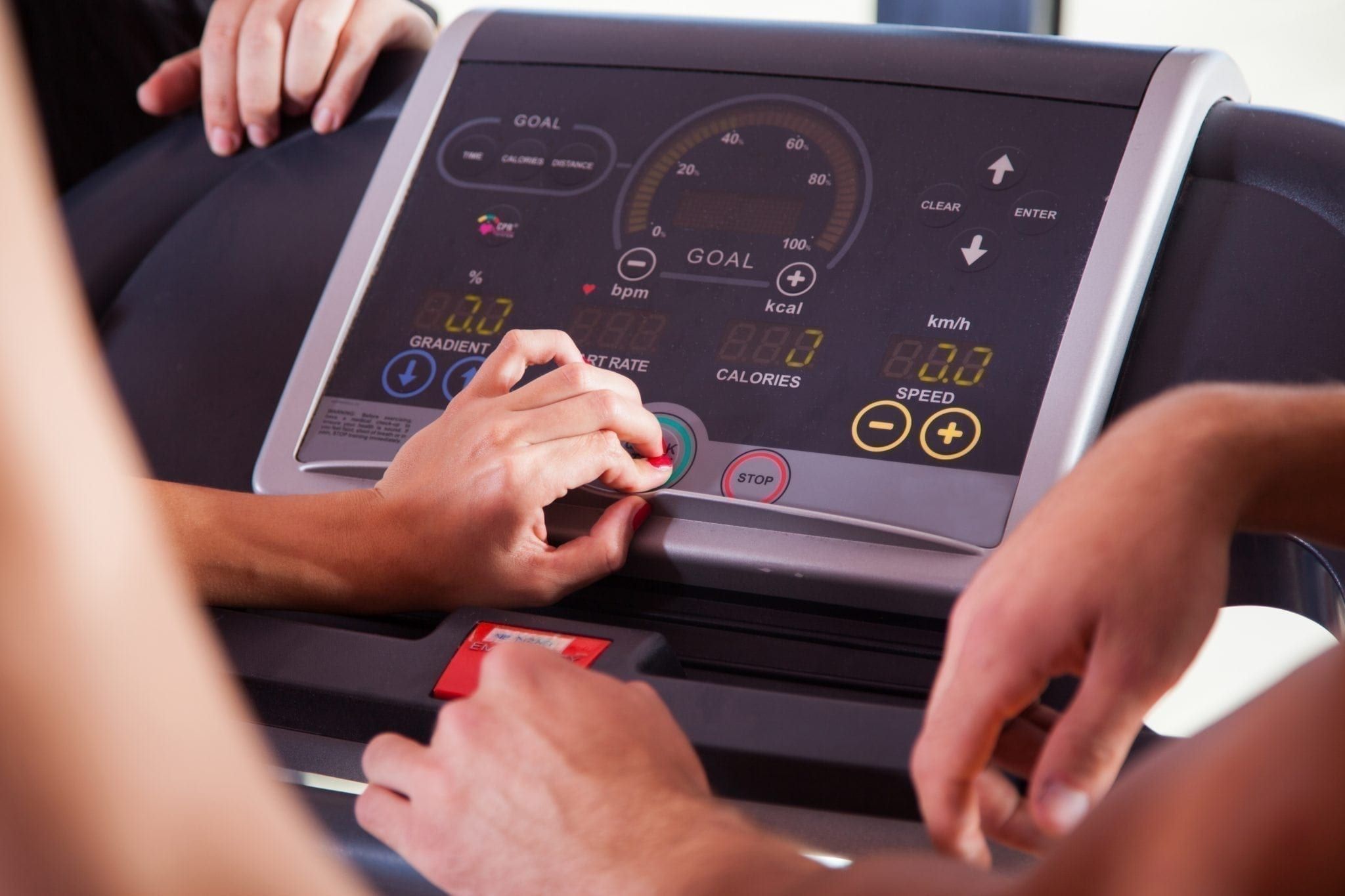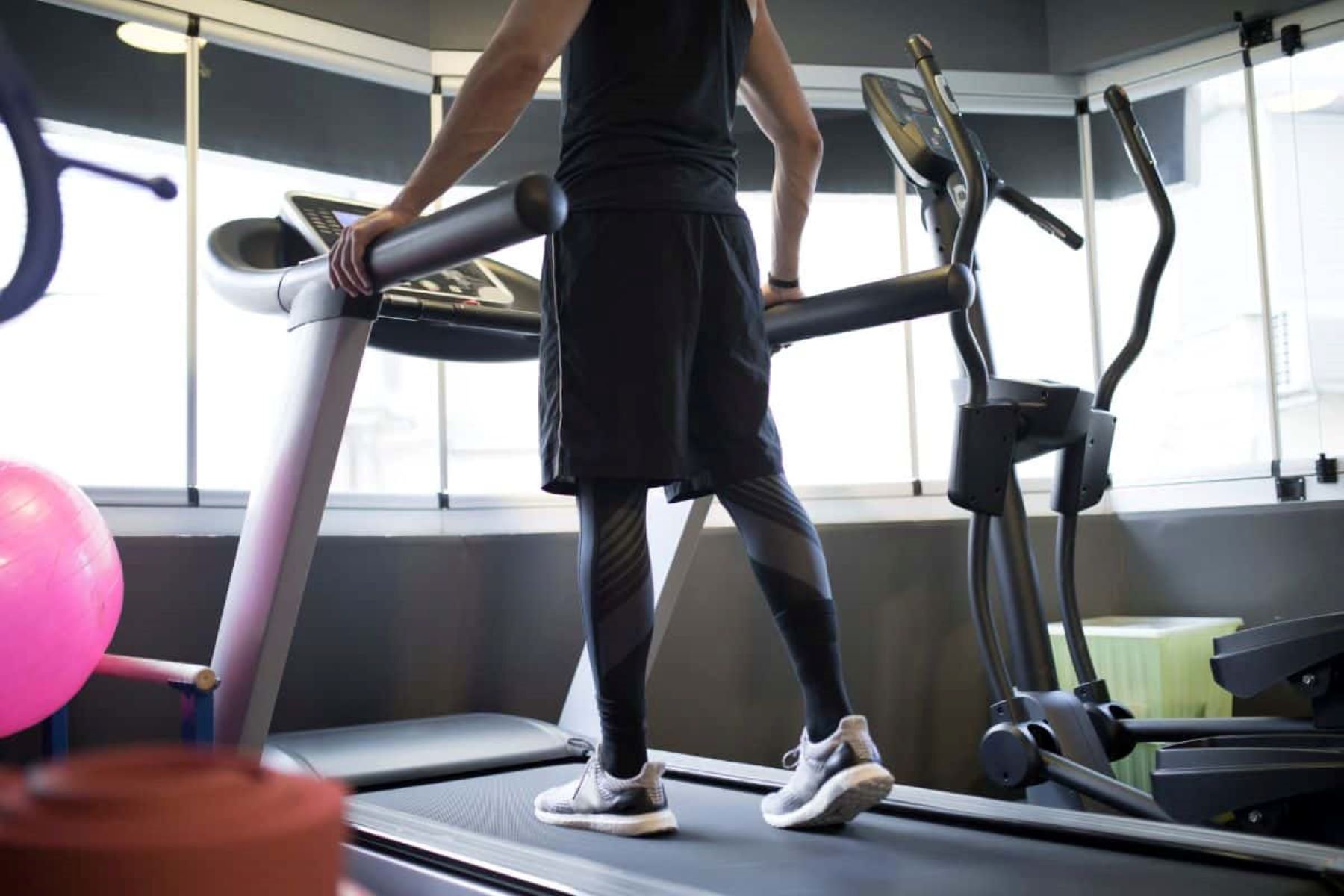Featured
How To Calibrate Fitness Tracker
Published: October 13, 2023
Discover the ultimate guide on how to calibrate your fitness tracker and ensure accurate data. Get featured with our expert tips and tricks!
Introduction
Welcome to the world of fitness trackers! In today’s fast-paced society, keeping fit and staying active has become more important than ever. Fitness trackers have emerged as popular accessories for individuals aiming to monitor their physical activity and achieve their fitness goals. These devices are equipped with various sensors and advanced features that provide valuable insights into your daily exercise routine.
However, to ensure accurate tracking, it is crucial to calibrate your fitness tracker. Calibration is the process of adjusting the settings and parameters of the device to accurately measure your activity levels, distance traveled, and other metrics. By calibrating your fitness tracker, you can ensure that the data it provides is reliable and tailored to your unique needs and abilities.
In this comprehensive guide, we will explore the importance of calibration for fitness trackers and provide you with step-by-step instructions on how to calibrate your device effectively. Whether you’re a fitness enthusiast or a beginner on your fitness journey, this article will equip you with the knowledge and skills to get the most accurate readings from your fitness tracker.
What is a Fitness Tracker?
A fitness tracker, also known as an activity tracker or a fitness band, is a wearable device designed to monitor and track your physical activity throughout the day. It is equipped with various sensors, such as an accelerometer, a heart rate monitor, and a GPS, to collect data on your movement, heart rate, sleep patterns, and more. This data is then processed and displayed on the device’s screen or synced to a companion app on your smartphone or computer.
One of the key features of a fitness tracker is its ability to track steps taken, distance traveled, and calories burned. By accurately measuring your activity levels, a fitness tracker can provide insights into your overall fitness and help you set and achieve your exercise goals. Some advanced fitness trackers can even monitor specific types of exercises, such as running, cycling, or swimming, and provide real-time feedback and coaching.
Aside from tracking physical activity, fitness trackers often come with additional features like sleep tracking, sedentary reminders, and heart rate monitoring. Sleep tracking allows you to monitor the quality and duration of your sleep, helping you identify patterns and make adjustments to improve your sleep habits. Sedentary reminders can alert you to move if you’ve been inactive for too long, promoting a more active lifestyle. Heart rate monitoring provides valuable information about your cardiovascular health and can help you optimize your workouts for maximum efficiency.
Many fitness trackers also offer smartwatch-like features, such as displaying notifications for incoming calls, text messages, and social media updates. This allows you to stay connected even while working out.
In recent years, fitness trackers have become increasingly popular as they provide a convenient way to monitor and track your fitness progress. Whether you’re a professional athlete, a fitness enthusiast, or simply interested in leading a healthier lifestyle, a fitness tracker can be a valuable tool to help you stay motivated and make informed decisions about your health and well-being.
Why is Calibration Important?
Calibrating your fitness tracker is crucial to ensure the accuracy and reliability of the data it provides. Here are a few reasons why calibration is important:
- Accurate Tracking: Fitness trackers rely on sensors to measure your physical activity, such as steps taken and distance traveled. By calibrating your device, you can ensure that these measurements are precise and reflect your actual movement. Without calibration, the readings may be inaccurate, leading to misleading data and potentially derailing your fitness goals.
- Customization: Each individual has a unique stride length and running style. By calibrating your fitness tracker, you can customize it to your specific body movements, ensuring more accurate and personalized tracking. This is especially important for activities like running or jogging where stride length plays a significant role in calculating the distance covered.
- Consistency: Calibration helps maintain consistency in tracking your physical activity. Over time, the sensors in your fitness tracker may slightly drift in accuracy, affecting the reliability of the data. By regularly calibrating your device, you can correct these drifts and ensure that your tracker consistently provides reliable and consistent measurements.
- Goal Setting: A major benefit of using a fitness tracker is tracking your progress towards your fitness goals. Whether it’s weight loss, increasing your daily step count, or completing a specific distance, calibration ensures that the data accurately reflects your efforts and allows you to set realistic and achievable goals. It helps you monitor your progress and make necessary adjustments to your exercise routine.
- Improved Performance: For activities like running or cycling, calibrating your fitness tracker can help you improve your performance. By accurately measuring the distance covered and the time taken, you can track your pace, set targets, and work towards improving your speed and endurance.
Calibration is not a one-time process but should be done periodically, especially if you notice any inconsistencies or discrepancies in the readings. By taking the time to calibrate your fitness tracker, you can optimize its performance and ensure that the data it provides is reliable, helping you make informed decisions about your health and fitness.
Step 1: Understand Your Fitness Tracker
Before you begin the calibration process, it’s important to familiarize yourself with the features and capabilities of your fitness tracker. Each device may have different settings and options, so understanding how your specific model works will make the calibration process smoother. Here are a few key aspects to consider:
- Read the User Manual: Start by reading the user manual or online documentation provided by the manufacturer. This will give you a comprehensive understanding of your fitness tracker’s features, functions, and how to navigate its settings.
- Know Your Tracker’s Sensors: Identify the sensors your fitness tracker uses to collect data. Common sensors include accelerometers for measuring movement, heart rate monitors, and GPS for tracking distance, and altimeters for measuring altitude. Understanding how these sensors work will help you make better-informed decisions during the calibration process.
- Find the Calibration Options: Explore the settings menu on your fitness tracker or companion app to locate the calibration options. This may be labeled as “Calibrate,” “Personalize,” or “Settings.” Understanding where to find these options will ease the process later on.
- Take Note of the Default Settings: Make a note of the default settings in your fitness tracker, specifically those related to stride length, weight, and any other relevant information. This will serve as a reference point during calibration and can be adjusted if needed.
- Understand the Limitations: Be aware of the limitations of your fitness tracker. For example, if your tracker does not have a built-in GPS, it may rely on step count and algorithms to estimate distance traveled. Understanding these limitations will help you set realistic expectations and make appropriate adjustments during calibration.
By understanding your fitness tracker and its capabilities, you can approach the calibration process with confidence. This knowledge will enable you to make informed decisions throughout the calibration process and ensure that your fitness tracker is accurately tracking your physical activity.
Step 2: Gathering Required Information
Before you can calibrate your fitness tracker, it’s important to gather the necessary information and measurements. This information will help you personalize the settings on your device and ensure accurate tracking. Here are the key pieces of information to gather:
- Stride Length: Measure your stride length, which is the distance you cover in one step. There are multiple methods to measure stride length. One common approach is to mark a starting point on the ground and walk or run a known distance, then count the number of steps taken. Divide the distance covered by the number of steps to calculate your stride length. Repeat this process a few times to get an average value for better accuracy.
- Weight: Record your weight accurately. Most fitness trackers use weight as a factor in calculating calories burned and distance traveled. Make sure the weight you enter is up to date and reflective of your current body weight.
- Activity Type: Determine the type of activity you’ll primarily engage in. Different activities may require different calibration approaches. For example, if you mainly run, you’ll need to focus on calibrating for running speed and distance, while if you swim, you’ll need to consider the water-resistance and stroke detection capabilities of your tracker.
- Heart Rate: If your fitness tracker includes a heart rate monitor, take note of your resting heart rate as well as your maximum heart rate. These values will help provide a more accurate estimate of calories burned during workouts.
- Unique Needs or Considerations: Consider any unique needs or considerations you may have. For example, if you have a prosthetic limb or use a wheelchair, you may need to explore additional calibration options or consider alternative tracking methods to ensure accurate measurements.
Gathering this information will create a solid foundation for calibrating your fitness tracker. By providing accurate measurements and personal information, you can ensure that the data collected by your tracker aligns with your individual characteristics and activities. This will result in more accurate and personalized tracking, empowering you to achieve your fitness goals more effectively.
Step 3: Calibrating your Fitness Tracker
Now that you have gathered the necessary information, it’s time to begin calibrating your fitness tracker. The calibration process may vary depending on the make and model of your device, so refer to your user manual or online documentation for specific instructions. However, here are some general steps to help guide you:
- Access Calibration Settings: Open the settings menu on your fitness tracker or companion app and locate the calibration options. This may be labeled as “Calibrate,” “Personalize,” or “Settings.”
- Choose the Activity: Select the activity you want to calibrate for from the available options. For example, if you primarily run, choose the running calibration option. If your device supports multiple activities, you may need to calibrate each one separately.
- Enter the Measurements: Input the measurements you gathered during Step 2. This typically includes entering your stride length and weight. If applicable, you may also need to provide additional information, such as your resting heart rate or maximum heart rate.
- Follow the On-screen Instructions: Depending on your device, you may be prompted with specific instructions to follow during calibration. This may include walking or running a certain distance, performing specific exercises, or simply wearing the device for a certain duration. Follow these instructions carefully to ensure accurate calibration.
- Complete the Calibration Process: Once you have followed the instructions, the calibration process should be complete. Your fitness tracker will save the calibrated settings, and you can begin using it with more accurate tracking capabilities.
It’s important to note that calibration is not a one-time process. Over time, as your fitness level and body change, you may need to recalibrate your device to maintain accuracy. Be mindful of any changes in your stride length, weight, or other relevant factors, and update your settings as necessary.
Remember to refer to your user manual or manufacturer’s instructions for specific details on how to calibrate your particular fitness tracker. By following these steps and ensuring accurate calibration, you can trust that the data provided by your fitness tracker reflects your actual performance, providing valuable insights into your progress and helping you reach your fitness goals.
Step 4: Testing the Calibration
After calibrating your fitness tracker, it’s important to test its accuracy to ensure that the calibration was successful. By conducting a few simple tests, you can verify if the readings align with your actual activity. Here are some steps to test the calibration of your fitness tracker:
- Record a Known Distance: Choose a track or a route where you know the exact distance. It could be a measured running track or a known course in your neighborhood.
- Start Tracking: Activate the tracking feature on your fitness tracker before you begin your activity. Make sure that it properly detects the type of activity you are engaging in (e.g., running, walking, or cycling).
- Complete the Activity: Walk, run, or cycle the known distance you have chosen while wearing your calibrated fitness tracker. Maintain your regular pace throughout the activity.
- Compare Results: Once you have completed the activity, compare the distance recorded by your fitness tracker to the known distance. If the readings are close or identical, it indicates that the calibration was successful. However, if there is a significant discrepancy, you may need to recalibrate your device.
- Repeat the Test: For more accurate results, repeat the test on different occasions and over various distances. This will help you determine if the calibration consistently provides accurate readings across different activities and distances.
By testing the calibration of your fitness tracker, you can ensure that the measurements are aligned with reality. If you notice any discrepancies, it may indicate that further adjustment or recalibration is needed. Consult your user manual or manufacturer’s instructions for guidance on how to recalibrate your specific device if necessary.
It’s important to note that while calibration improves accuracy, it cannot eliminate all instances of error. Factors such as GPS signal strength, environmental conditions, or device limitations may still affect the precision of the readings. Understanding these limitations will help you interpret the data provided by your fitness tracker more effectively.
Regularly testing the calibration of your fitness tracker will help you stay confident in its accuracy, allowing you to track your progress and make informed decisions about your fitness journey.
Step 5: Adjusting the Settings
After calibrating your fitness tracker and testing its accuracy, you may find the need to make further adjustments to the settings to fine-tune its performance. Here are some aspects to consider when adjusting the settings of your fitness tracker:
- Personalize Activity Profiles: If your fitness tracker allows for multiple activity profiles, consider customizing each profile to better suit your specific needs. For example, you may want different settings for running, walking, or cycling. Adjust parameters such as stride length, GPS accuracy, heart rate zones, or altitude settings to optimize the accuracy of tracking for each activity.
- Enable Automatic Tracking: Many fitness trackers offer automatic activity detection, which can help save time and effort in manually starting and stopping tracking sessions. Adjust the settings to enable automatic tracking for activities such as walking, running, or cycling, ensuring that your fitness tracker captures all relevant data without manual intervention.
- Review Sleep Tracking: If your fitness tracker includes sleep tracking, review the settings related to sleep detection and analysis. Adjust options such as sensitivity or sleep duration intervals to ensure accurate monitoring of your sleep patterns and provide useful insights into your sleep quality.
- Monitor Heart Rate Zones: If your fitness tracker includes heart rate monitoring, familiarize yourself with the heart rate zone settings. Adjust the zones to align with your fitness goals and training targets. For example, you might set specific zones for fat burning, aerobic training, or high-intensity intervals.
- Sync with Companion App: Make sure to sync your fitness tracker with its companion app on your smartphone or computer. This allows you to access additional features, review and analyze your data, set goals, and receive personalized recommendations based on your activity and performance.
Remember that adjusting the settings of your fitness tracker is a continuous process. As you gain more experience with your device and understand its capabilities and limitations, you may find it beneficial to make further tweaks to the settings to optimize your tracking experience.
It’s also worth exploring any additional customization options offered by the manufacturer or third-party apps that integrate with your fitness tracker. These options can provide further personalization and enhance your overall tracking experience.
By adjusting the settings of your fitness tracker, you can fine-tune its performance to align with your specific needs and goals. This ensures that you’re making the most out of the device’s capabilities and maximizing the accuracy and usefulness of the data it provides.
Conclusion
Calibrating your fitness tracker is an essential step in ensuring accurate and reliable tracking of your physical activity. By following the steps outlined in this guide, you can optimize the performance of your device and obtain more accurate data to monitor your progress and reach your fitness goals.
Understanding your fitness tracker’s features and gathering the necessary information are important foundational steps. This knowledge allows you to personalize the settings and parameters of your tracker according to your unique characteristics and activities. This ensures that the data collected by your device reflects your actual movements and provides accurate feedback on your performance.
By regularly testing the calibration of your fitness tracker, you can verify its accuracy and make any necessary adjustments or recalibrations. This helps maintain the device’s reliability and keeps you informed about your progress while engaging in physical activities.
Remember to adjust the settings of your fitness tracker to further fine-tune its performance. Personalizing activity profiles, reviewing sleep tracking, monitoring heart rate zones, and syncing with companion apps all contribute to a more tailored and optimized tracking experience.
Ultimately, calibrating your fitness tracker allows you to make informed decisions about your fitness routine, set realistic goals, and track your progress accurately. By utilizing this valuable tool, you can stay motivated, improve your performance, and lead a healthier and more active lifestyle.



